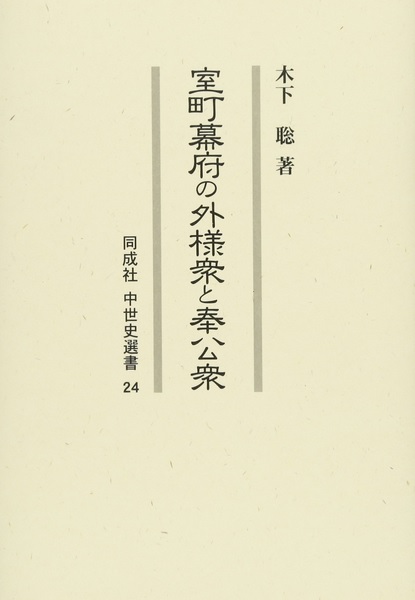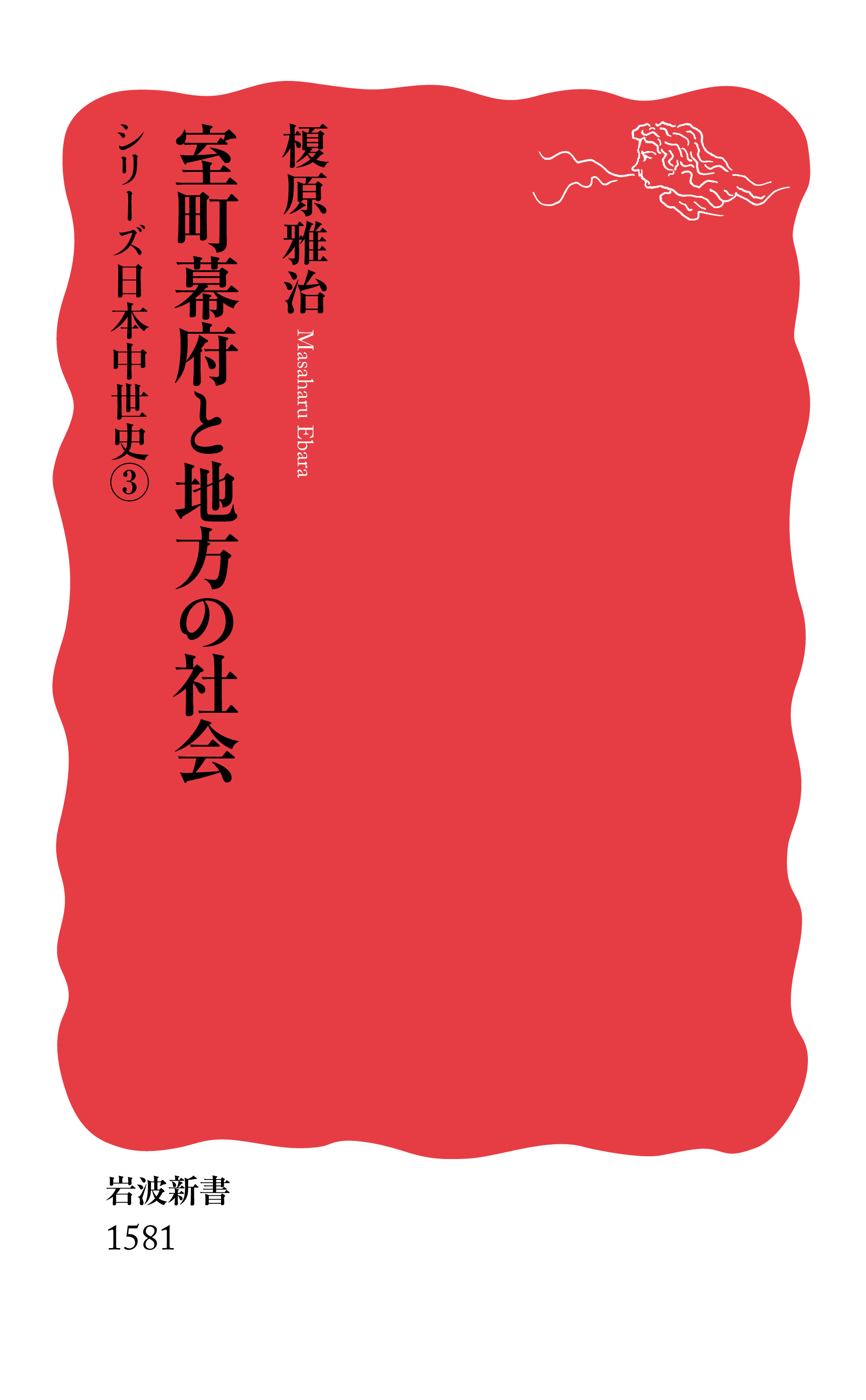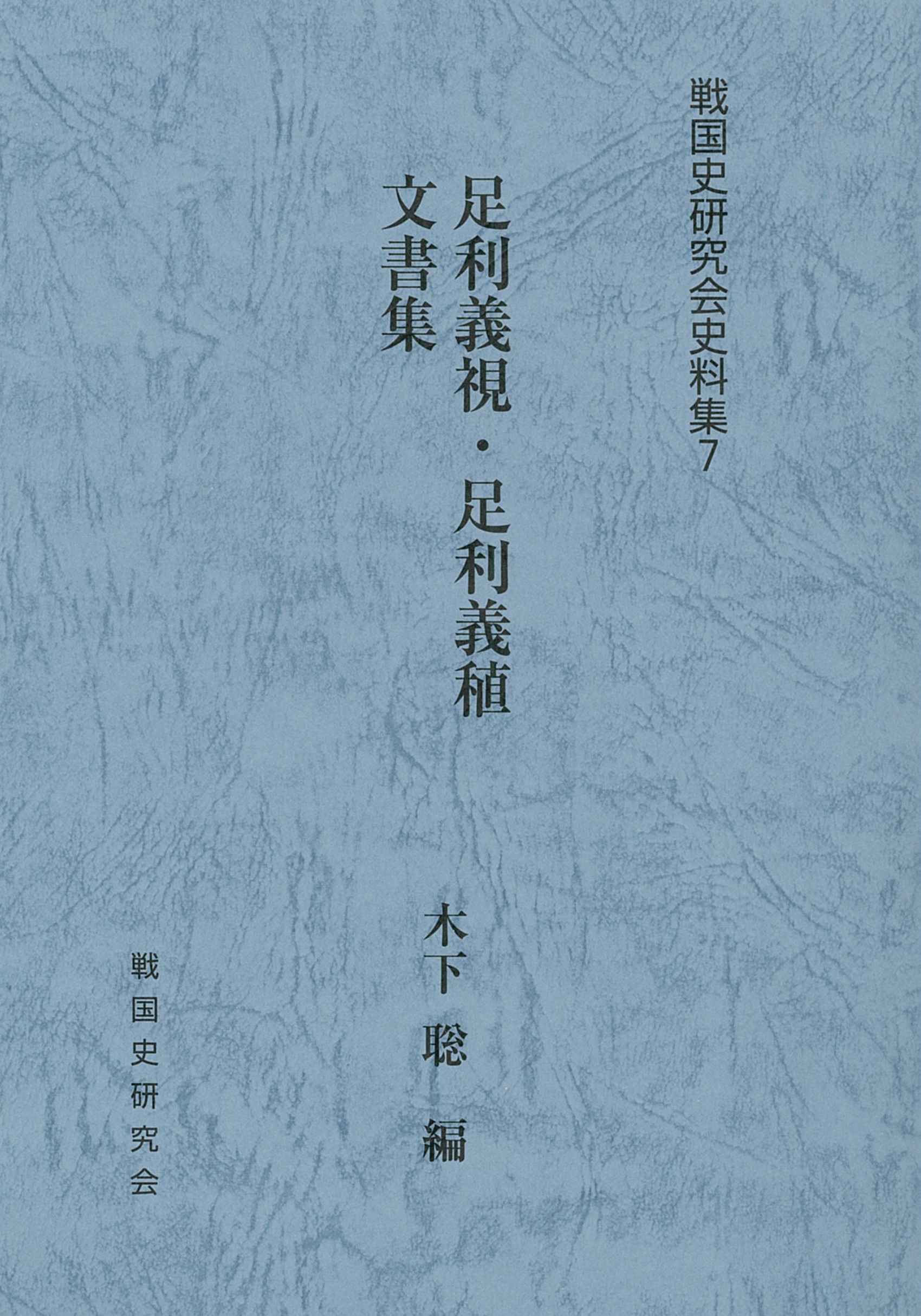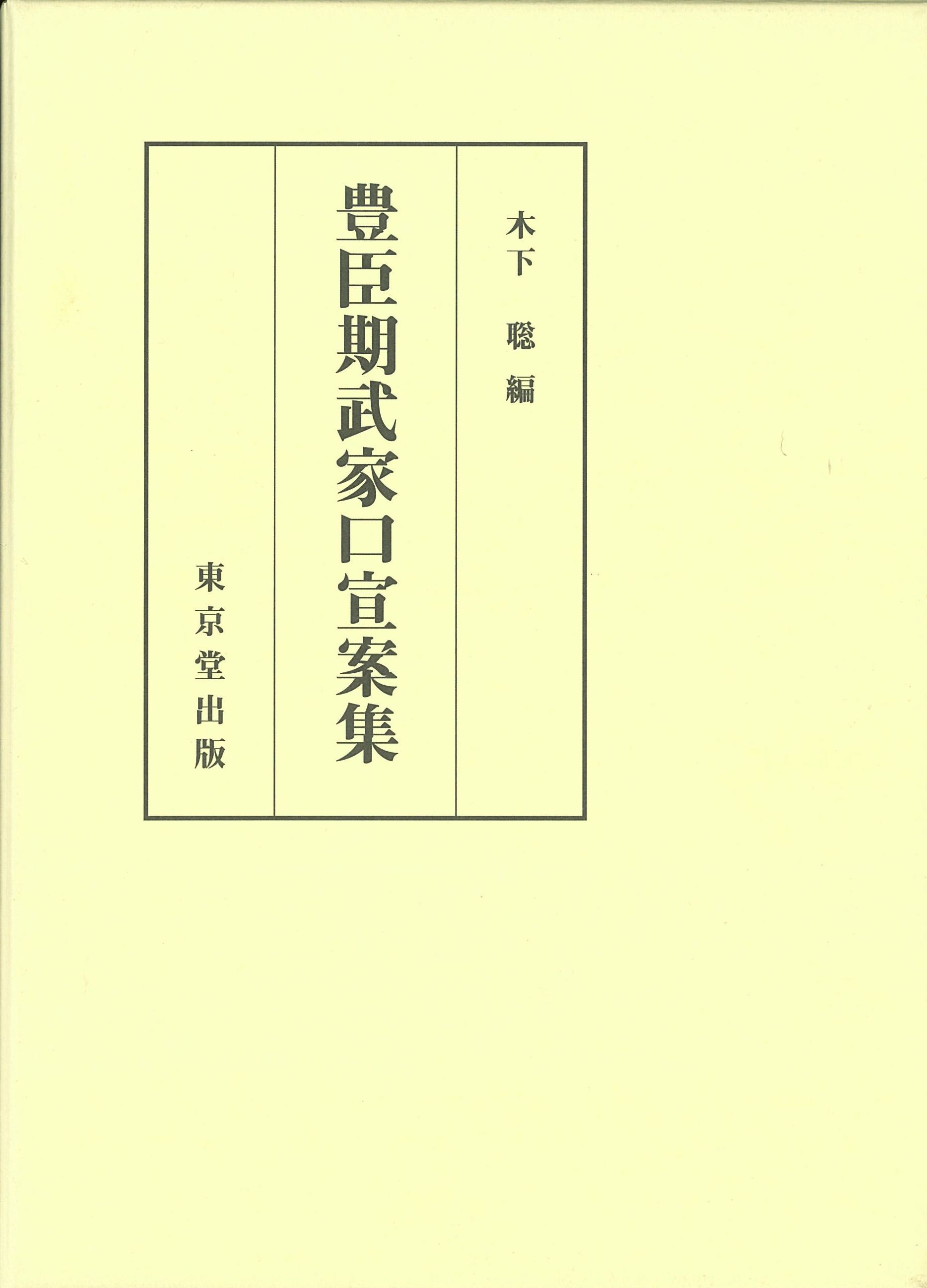
Title
Dōseisha Medieval History Series 24 Muromachi-Bakufu no tozamashū to hōkōshū (Non-kin Vassal Families and Military Service Families of the Muromachi Shogunate)
Size
370 pages, A5 format
Language
Japanese
Released
April 20, 2018
ISBN
9784886217905
Published by
Douseisha
Book Info
See Book Availability at Library
Japanese Page
The Muromachi shogunate was headed by the shogun and composed of military governors (shugo), non-kin vassal families (tozamashū), military service families (hōkōshū), functionaries (bugyōnin), and so on. The non-kin vassal families and military service families dealt with in this book had originally been powerful proprietary lords in the provinces, and during the civil war of the Nanbokuchō period they had sided with the shogun and resided permanently in Kyoto. In emergencies they functioned as military forces under the direct control of the shogun, and in peacetime they guarded the shogun’s residence and served as attendants and bodyguards when he left his residence. They also acted as local administrators (daikan) of the shogun’s own estates.
Non-kin vassal families and military service families thus occupied an important position within the shogunate. However, although individual families have been examined in the past, there had been no overall examination of them for more than twenty years since a series of studies by Fukuda Toyohiko, and when it came to non-kin vassal families, their existence was known, but their constituent members, roles, origins, and so on had not been examined at all.
In Part I of this book, the aim is to shed light on these non-kin vassal families and military service families in general terms. First, I clarify how the Muromachi shogunate was organized and show that as well as being indispensable for the shogunate’s rule of the country, non-kin vassal families and military service families resided in Kyoto and attached themselves to the shogunate because it was advantageous for them to be organized into such families. In addition, I clarify the constituent members of non-kin vassal families and their origins, give brief accounts of their families, and elucidate the roles they fulfilled within the shogunate. In the case of military service families, too, I examine the dates of their establishment and changes in their constituent members and present a table showing which families served as military service families in which period. In the “Introduction” I also provide a summary of prior research on non-kin vassal families and military service families that has come to my notice.
In Part II, I examine among constituent members of non-kin vassal families the families of members of the Deliberative Council (hyōjōshū), which went back to the Kamakura shogunate. Although they basically did not include any men who were leading figures on the political stage, they were entrusted with important posts such as commissioner of court appointments, head of the office of urban property, and head of the office of shrine affairs, and they belonged to families that continued to support the Muromachi shogunate.
Common to them was a stance that sought to preserve their family status, rank, and position within the shogunate, with very few of them displaying any upward ambitions, and after the Ōnin War they each tried to find their own way. The Settsu family, which strengthened its ties with the shogun, and the Nikaidō and Machino families, which endeavoured to preserve the status quo, were rewarded for their efforts and managed to survive until the very end of the shogunate, but ultimately they shared its fate. The Hatano family, on the other hand, which abandoned Kyoto and resided in its domain in Echizen, has preserved the family line down to the present day.
How is one to live through upheavals? This is a question faced in every period and in every region. The non-kin vassal families and military service families of the Muromachi shogunate, too, were vexed by the question of how to maintain relations with and distance from the shogunate and emerging daimyō as part of each family’s survival strategies. This book is helpful not only for gaining a full picture of non-kin vassal families and military service families but also for viewing their anguish from such a perspective.
(Written by KINOSHITA Satoshi, Assistant Professor, Graduate School of Humanities and Sociology / 2018)



 Find a book
Find a book




